
views
Finding Your Undertone

Distinguish between undertone and overtone. Undertone is the natural color of your skin right beneath the surface layer. Exposure to the elements, acne, scarring and other skin conditions can cause your overtone, or surface shade, to change and vary. Your skin’s undertone, however, never changes. Discovering your undertone is the key to finding your perfect foundation shade. Avoid using your skin’s overtone to select a foundation shade. Don’t attempt to change your undertone with makeup. This will end up looking very unnatural.
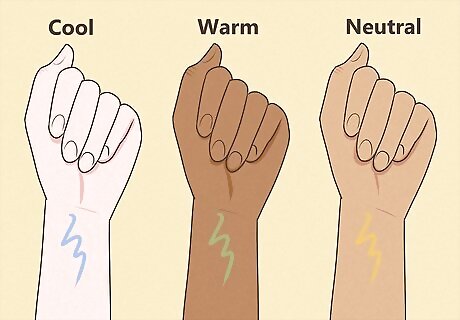
Consider your overall skin tone. There are three major undertones – warm, cool and neutral. If your skin color ranges between tan and light brown, you probably have a warm undertone. If your skin color ranges between medium and deep, you probably have a neutral undertone. A cool undertone is slightly more unusual to find in darker skin, but it shouldn't be discounted completely. For instance, someone with deep ebony skin may have cool undertones. Keep in mind that the overtone and undertone of your skin may change depending on the time of the year. You may need one foundation for summer, one for winter, and a third for autumn and spring. Most foundation manufacturers divide their products into the undertone categories of warm, cool and neutral.

Inspect the color of your veins. The color your veins appear under your skin can help you determine your undertone. The best place to look is on the undersides of your wrists. Be sure to inspect them under natural lighting. Look closely – do the veins there appear blue-green or blue-purple? Blue-green veins suggest a warm undertone. Blue-purple veins suggest a cool undertone. If you can’t tell, or if you see both, you probably have a neutral undertone.
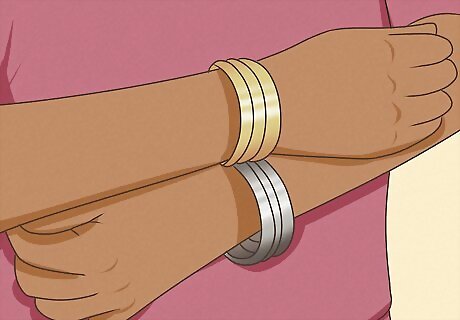
Perform a jewelry test. Place a gold bracelet on one arm and a silver one on the other. Which one looks better on you? Don’t judge based on which metal you like better – which one looks more flattering next to your skin? If silver makes you look lifeless and gold makes you look bright and glowing, you probably have a warm undertone. If gold makes you look washed out and silver makes you look radiant, you probably have a cool undertone. If neither looks better than the other, you probably have a neutral undertone.
Identifying Your Overtone

Examine your body instead of your face. Overtone – or surface shade – will determine how light or dark your foundation should be. People with darker skin tones tend to have lighter skin on their faces than on the rest of their bodies. When determining your skin’s surface shade, don’t inspect the color of your face alone. Your hands are also unreliable for shade matching. Instead, look at your body as a whole, especially the area from your chest to your jaw. The goal when choosing a foundation shade is to unify the color of your face with the rest of your body. Make sure you are using natural lighting when examining your skin color.

Visit a department store beauty counter for foundation samples. Properly identifying your skin’s surface shade will be a trial and error process. Makeup artist Tymia Yvette suggests "choosing 3 foundations to color swatch with same depth but different undertones." Yvette explains "that one foundation should have a warm undertone, another should have a cool undertone, and the third should have a neutral undertone." Once you get them all home, stand in front of a mirror under natural lighting to test them out. Make sure your skin is clean, moisturized and has no other makeup on it before you begin testing.

Test each shade. Apply the makeup by drawing a line from your cheek down to your jawline. Do not blend it in. Wait about ten minutes and then examine the swatches. Makeup artist Tymia Yvette advises "looking at yourself in natural light" when you do this. She adds that "the foundations that disappear smoothly into your skin are your best shade choices." Once you’ve narrowed it down, test those shades on your chest, as well, to make sure they disappear seamlessly there, too. If you have oily skin, try a foundation that’s one shade lighter than what you were expecting. This is because oily skin creates the illusion of darker skin color. If you’re having a hard time finding the right shade, consider mixing two shades together to create a customized tone.
Choosing a Foundation
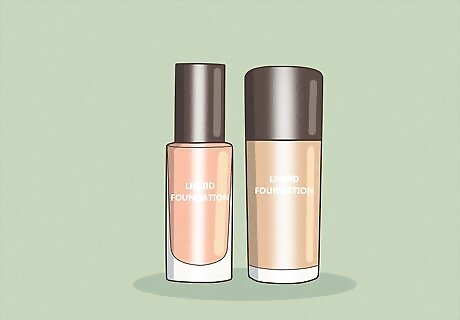
Opt for a liquid formula with a heavier texture. Liquid foundation tends to look fresher on dark complexions because they blend more easily into the skin, allowing your natural skin tone to shine through. Furthermore, those with darker complexions tend to experience hyperpigmentation and irregularities in skin tone, especially around the mouth area. Liquid foundations with heavier textures allow for buildable coverage, so you can even out your skin tone where you need to.
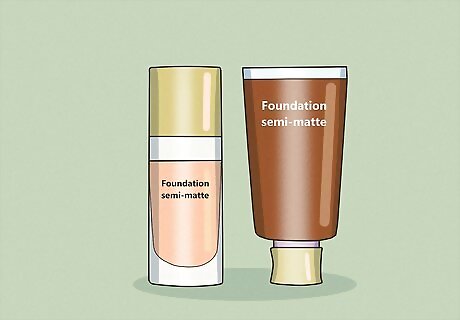
Choose a semi-matte formula. Dark skin tones reflect light very well, which gives you a natural looking glow. Avoid foundations with glow-inducing formulas, which may end up looking greasy. Instead, opt for foundations with semi-matte finishes. A semi-matte finish can help to balance out your natural glow so there won’t be too much shine. Check the product label to find out what kind of finish it provides. A completely matte formula on darker complexions can end up looking cakey. A semi-matte finish is the best choice.
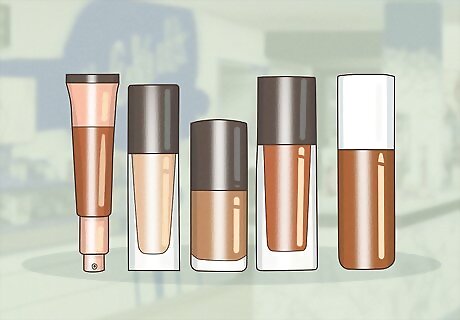
Shop premium brands for the widest shade selection. Unfortunately, many of the cheaper drugstore brands of foundation are still somewhat limited in their shade ranges. This is a problem that those with darker complexions are probably very familiar with. Limited shade options have long been an issue in cosmetic lines because dark complexions are very nuanced in color and tone. However, some of the higher end foundation brands are beginning to vastly expand the range of shades they offer for darker complexions. If you are having trouble finding your perfect shade in the drugstore, check the higher end brands at department stores and specialty boutiques.
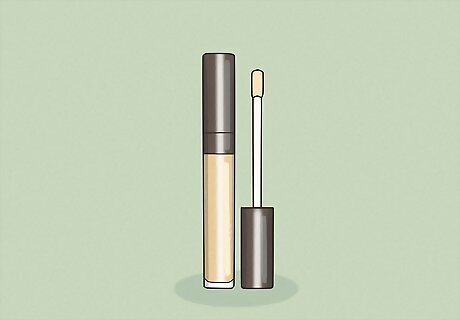
Select a concealer that is lighter than your foundation shade. It’s often assumed that your concealer shade should match your foundation shade. However, because irregular pigmentation and dark under-eye circles are typical problems for those with darker complexions, matching the two products isn’t ideal. When choosing a concealer, opt for something one or two shades lighter than your foundation for best results.




















Comments
0 comment